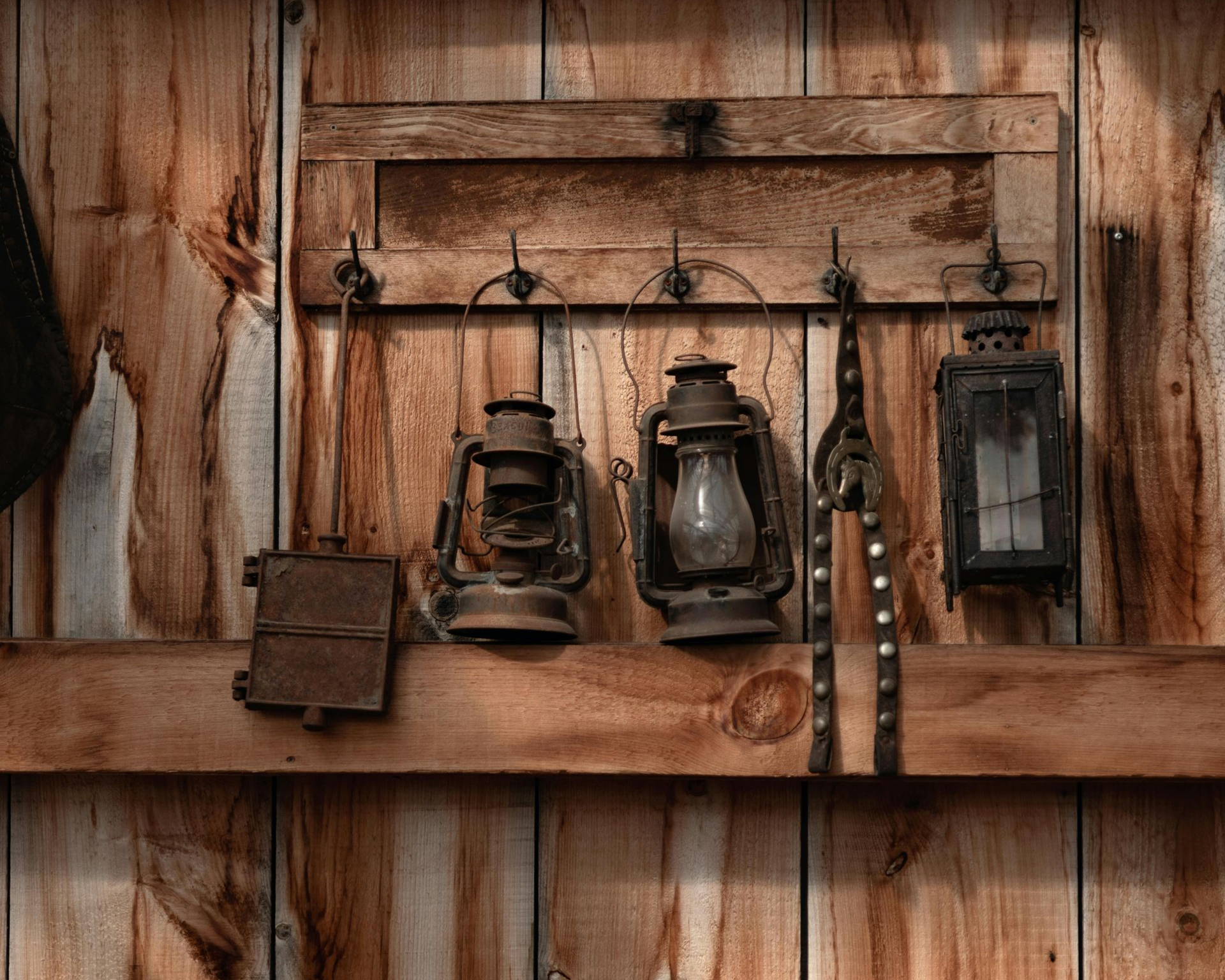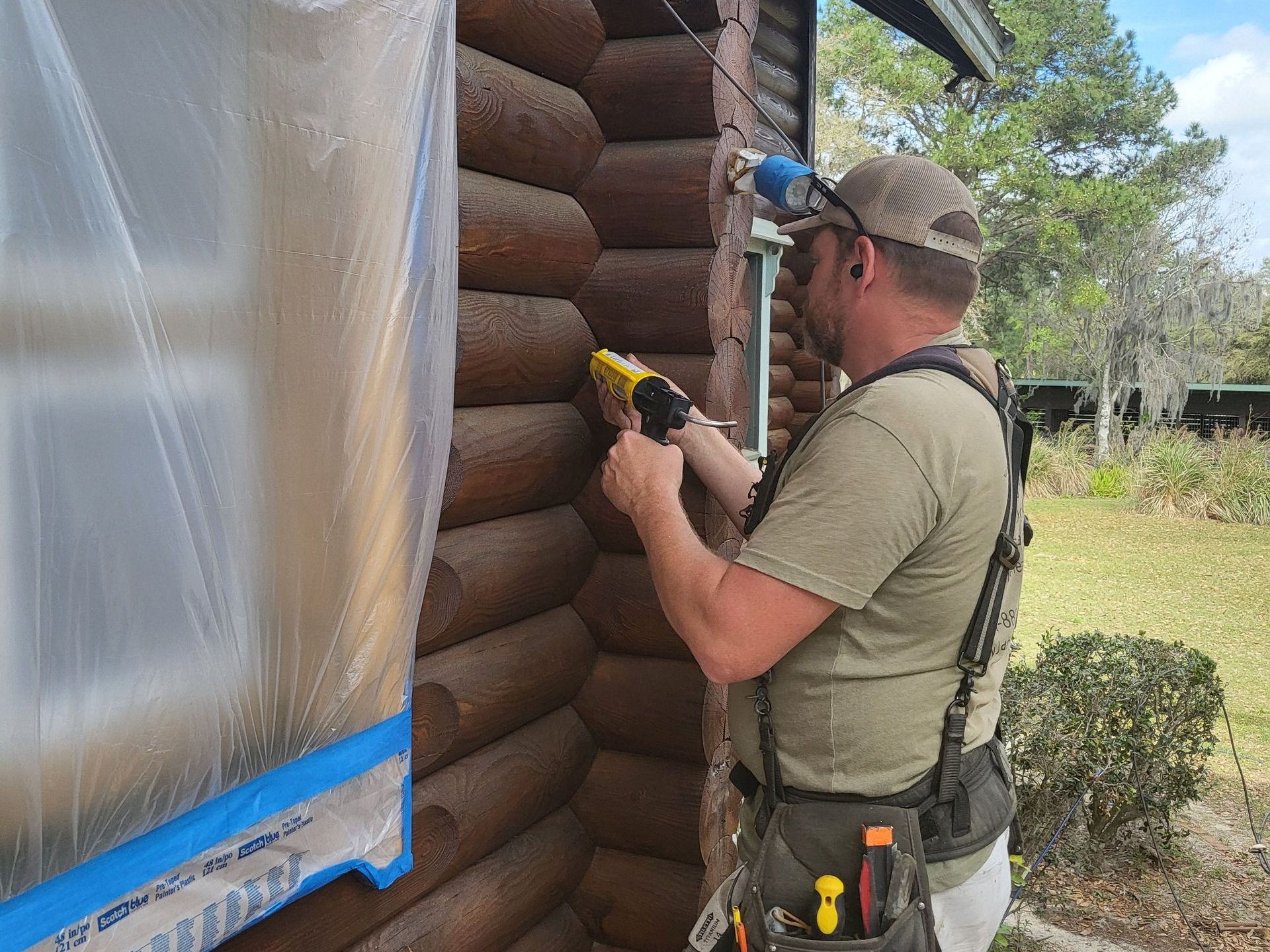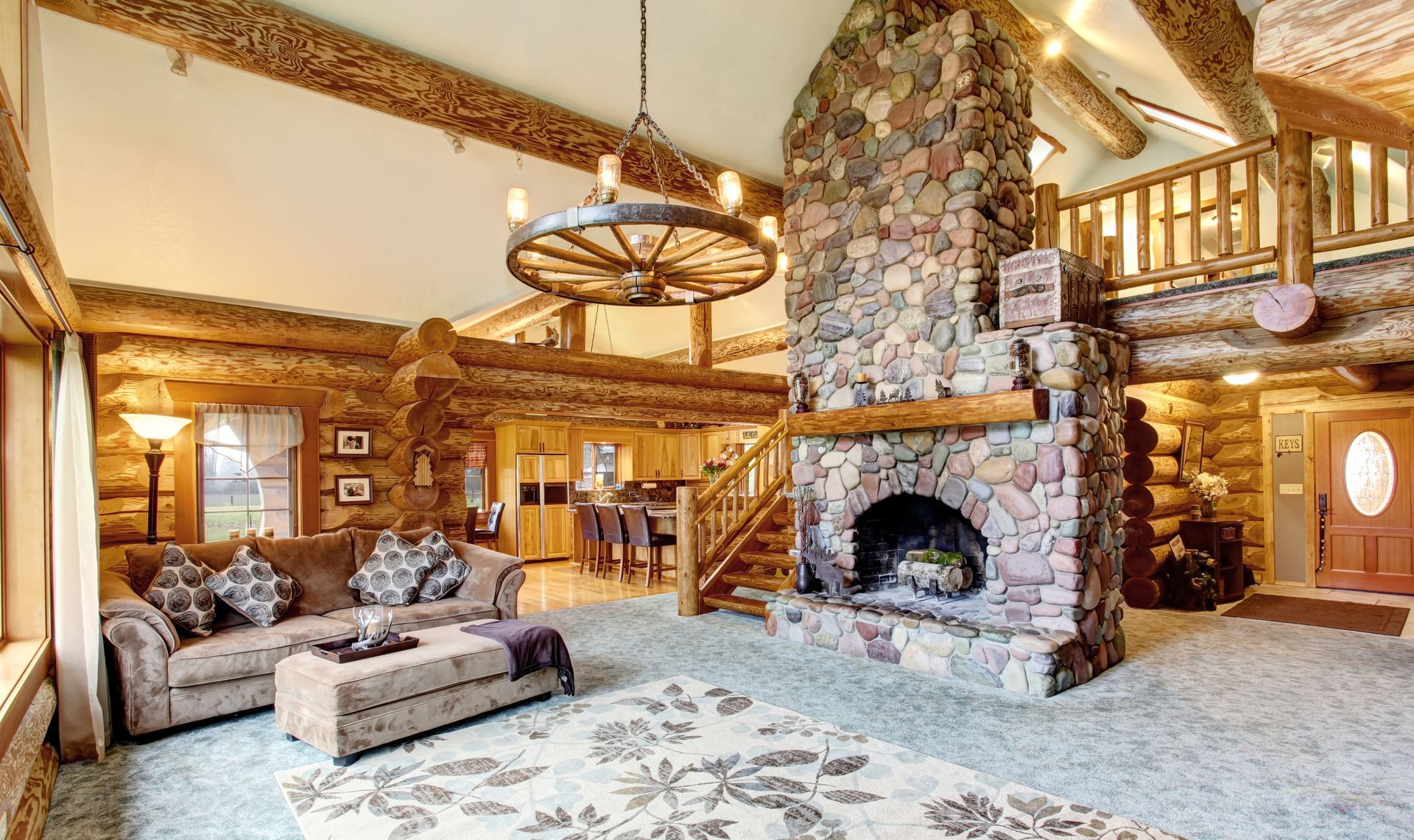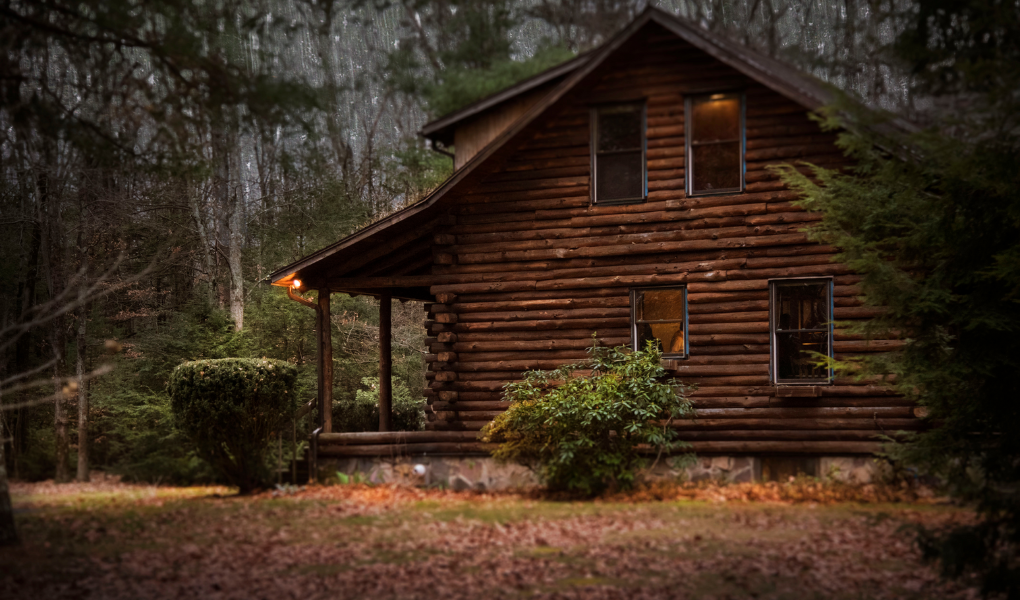Protecting Your Log Home from Weather Damage: Seasonal Preparation Guide
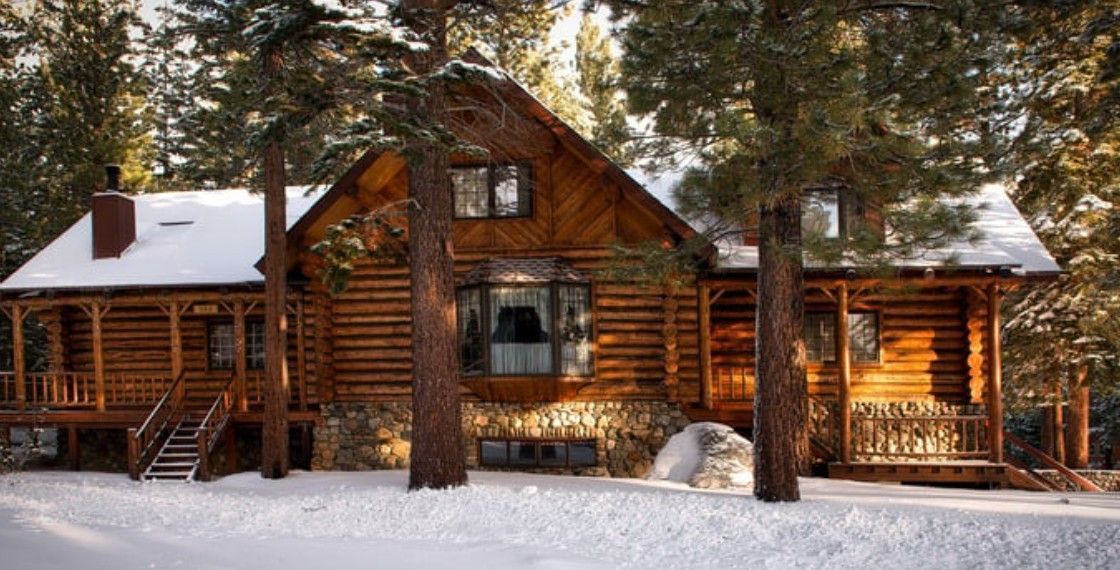
A log home is a cozy retreat for relaxation, a connection to nature, and a place where memories are made. However, log homes require ongoing care, especially when facing changing weather conditions throughout the year. Seasonal preparation is essential to maintain the integrity and beauty of your log home while protecting it from potential damage.
Here’s is our seasonal cabin checklist of to dos:
Why Seasonal Preparation Matters
Log homes are uniquely gorgeous but require extra care to defend against the elements. Logs expand, contract, and are prone to damage from water, temperature changes, and sunlight. By implementing seasonal maintenance routines, you can:
- Prevent costly repairs by catching issues early.
- Protect the structural integrity of your home.
- Keep the aesthetic appeal of your log home intact.
- Ensure your home remains safe and comfortable throughout the year.
With this in mind, let's break down the key seasonal tasks for log home care.
Winterizing Your Log Cabin
Winter calls for preparing your home against snow, ice, and freezing temperatures. Here’s how:
- Seal Cracks and Gaps
Inspect your logs for cracks or gaps where cold air could seep in. Reseal these areas using high-quality caulking or chinking to maintain insulation and prevent moisture intrusion. - Inspect and Clean the Chimney
If you use a fireplace, have your chimney inspected and cleaned. This ensures safe operation during the colder months while preventing creosote buildup. - Check the Roof and Gutters
Be sure your roof is in good condition and clear your gutters of debris to allow snowmelt to drain properly instead of pooling and causing water damage. - Protect Against Frozen Pipes
Insulate exposed pipes and ensure your home is heated enough to prevent freezing, which could lead to expensive repairs. - Monitor for Snow Load
Heavy snow can compromise the structural integrity of your home. Regularly remove snow from the roof using a roof rake to prevent overburdening.
Preparing for Spring Rains
Spring is a time for renewal, and it’s also the season when rain and melting snow can wreak havoc. Here’s what to focus on:
- Inspect for Water Damage
Examine your logs for signs of water stains or rot that may have developed over winter. Address any issues promptly to prevent the spread of rot. - Chinking
and Caulking
Spring is perfect for resealing compromised gaps between logs to prevent leaks. - Clear Gutters and Downspouts
Remove debris from gutters to ensure proper drainage during spring rains. Poor drainage can lead to foundation issues. - Examine Landscaping
Adjust your landscaping, including grading soil to channel water away from the foundation and prevent flooding. - Wash and
Stain Your Log Cabin
Give your cabin a spring refresh by washing away dirt and mildew that may have accumulated. If needed, reapply stain to enhance water resistance.
Summer Heat Protection
Summer’s intense sun and rising temperatures can affect the exterior of your log home. Follow these tips to keep your home protected:
- Check Stains and Finishes
Inspect the exterior for signs of fading or peeling. UV rays can degrade stains, so ensure your log home has a fresh protective layer to prevent sun damage. - Inspect for Pests
Summer is prime time for insects like carpenter bees. Treat affected areas and apply insect deterrents where necessary. - Ventilate Properly
Ensure your attic and home are properly ventilated to prevent excess heat buildup that could damage your logs or roof. - Maintain Landscaping
Trim nearby bushes, trees, and other vegetation to allow airflow around your cabin (minimum 2 feet), which helps in keeping moisture away from the logs. - Clean Decks and Porches
Prolong the life of outdoor wooden structures by cleaning and sealing them to protect against summer sun and rain showers.
Fall Maintenance Prep
Fall is the perfect time to prepare your home for harsh winter conditions. Use this time for in-depth maintenance:
- Inspect the Roof
Check for loose shingles or other roof issues. Address problems to ensure the roof can withstand snow and wind. - Service Windows and Doors
Inspect seals around windows and doors, adding weather stripping as needed to keep drafts out. - Clean and Protect Gutters
Remove fallen leaves from gutters and downspouts to prevent blockages and water overflows. - Address Exterior Wear
Look for signs of wear and tear in the logs or finish. Apply necessary treatments like chinking or staining to ensure your cabin stays protected through winter. - Prepare Outdoor Equipment
Cover or store outdoor furniture, grills, and other gear to protect against falling debris and snow.
Regular Maintenance Pays Off
By committing to regular seasonal maintenance, you not only extend the life of your log home but also preserve its beauty and functionality. Attention to detail prevents small problems from evolving into major repairs, saving you thousands of dollars over time. And there’s nothing like the peace of mind that comes with knowing your cherished home is weather-ready.
Professional Help When You Need It
While some maintenance tasks can be tackled by homeowners, others require professional expertise. Companies like Log and Timber Solutions offer comprehensive care, including inspections, log repairs, staining, and sealing, to keep your log home in pristine condition. They also provide yearly maintenance programs to take the guesswork out of seasonal preparation.
Take Action Today
Protecting your log home from weather damage is a year-round commitment, but it doesn’t have to be overwhelming. Follow the seasonal tips above to safeguard your investment and enjoy the charm of log cabin living for years to come. If you’re ready to start with your
log cabin restoration, reach out to Log and Timber Solutions to schedule an inspection or maintenance service.
FAQ's
How often should I inspect my log home for weather damage?
It's recommended to inspect your log home at least once every season. Each inspection allows you to spot specific issues like water damage after spring rains, sun damage in summer, or cracks before winter. Regular inspections help catch problems early, saving you time and money in repairs.
What’s the best way to deal with snow accumulation on a log home roof in winter?
To prevent structural damage, clear snow off your roof once the snow load exceeds 6 inches. Use a roof rake to safely remove it without climbing on the roof. Additionally, ensure your attic is well insulated and ventilated to prevent ice dams that can cause leaks.


